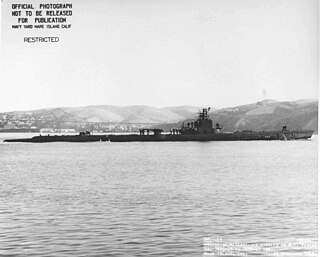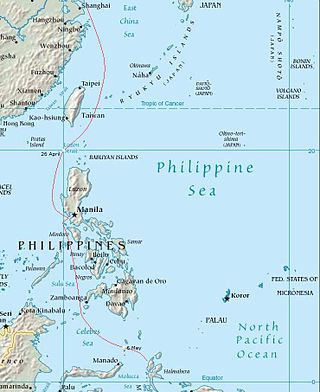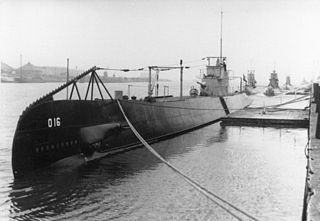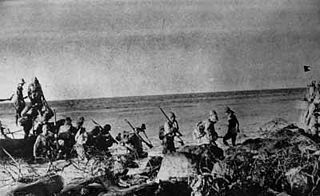USS Gudgeon (SS-211) was the first American submarine to sink an enemy warship in World War II. She was the last of the long-range Tambor-class vessels commissioned for the United States Navy in the years before the country entered World War II. Gudgeon scored 14 confirmed kills, placing her 15th on the honor roll of American submarines. She was declared overdue, presumed lost with all hands, on 7 June 1944. Of the twelve Tambor-class submarines, only five survived the war.

USS Snook (SS-279), a Gato-class submarine, was the first ship of the United States Navy to be named for the common snook, an Atlantic marine fish that is bluish-gray above and silvery below a black lateral line.

USS Gar (SS-206) was the first of the Gar subclass of the Tambor-class submarines to be commissioned for the United States Navy just prior to the country's 7 December 1941 entry into World War II. These submarines were a slightly improved version of preceding submarines of the Tambor class. While Gar survived the war, all of her sister ships — USS Grampus (SS-207), 'USS Grayback (SS-208), USS Grayling (SS-209), USS Grenadier (SS-210), and USS Gudgeon (SS-211) — were lost. She is the only ship of the United States Navy to be named for the gar, a fish of the family Lepisosteidae.

USS Sturgeon (SS-187), a Salmon-class submarine, was the second ship of the United States Navy to be named for the sturgeon. Her 1944 sinking of the Japanese troopship Toyama Maru, killing more than 5,000 Japanese, was one of the highest death tolls from the sinking of a single ship in history. Her 1942 sinking of the Montevideo Maru which, unknown to crew on the Sturgeon, was carrying over 1,000 POWs, was the worst maritime disaster in Australian history.

USS Gurnard (SS-254), a Gato-class submarine, was the first ship of the United States Navy to be named for the gurnard.

The Japanese aircraft carrier Taiyō was the lead ship of her class of three escort carriers. She was originally built as Kasuga Maru (春日丸), the last of three Nitta Maru class of passenger-cargo liners built in Japan during the late 1930s for NYK Line. The ship was requisitioned by the Imperial Japanese Navy (IJN) in early 1941 and was converted into an escort carrier. Taiyō was initially used to transport aircraft to distant air bases and for training, but was later used to escort convoys of merchant ships between Japan and Singapore. The ship was torpedoed twice by American submarines with negligible to moderate damage before she was sunk in mid-1944 with heavy loss of life.

Arisan Maru was a 6,886 GRT Type 2A freighter constructed in 1944 during World War II and was one of Imperial Japan's hell ships. The vessel, named for a mountain on Taiwan, was initially used as a troop transport. The vessel was then turned over for use for the transportation of prisoners of war (POWs) from the Philippines to Manchuria, China or Japan. On October 24, 1944, the ship was torpedoed by an American submarine and sank. Of the 1,781 POWs aboard, all of them escaped the sinking ship but were not rescued by the Japanese. In the end, only nine of the prisoners survived the sinking.

Awazisan Maru (淡路山丸), also known as Awajisan Maru or Awagisan Maru, was a motor cargo vessel built by Tama Zosensho of Tamano for Mitsui & Co. Ltd. with intention of serving on their Yokohama to New York route. The ship remained in service between Japan and United States for two years before being requisitioned by the Imperial Japanese Army. She was bombed and damaged during her first Army mission and subsequently torpedoed and sunk by a Dutch submarine in December 1941.

The Japanese destroyer Asakaze was one of nine Kamikaze-class destroyers built for the Imperial Japanese Navy (IJN) during the 1920s. During the Pacific War, she participated in the Philippines Campaign in December 1941 and the Dutch East Indies Campaign in early 1942. She took part in the Battle of Sunda Strait in March and helped to sink two Allied cruisers. She was sunk by the USS Haddo in August 1944.

The Take-Ichi sendan was a Japanese convoy of World War II. The convoy left Shanghai on 17 April 1944, carrying two infantry divisions to reinforce Japan's defensive positions in the Philippines and western New Guinea. United States Navy (USN) submarines attacked the convoy on 26 April and 6 May, sinking four transports and killing more than 4,000 soldiers. These losses caused the convoy to be diverted to Halmahera, where the surviving soldiers and their equipment were unloaded.
Azumasan Maru was a 7,623-gross register ton freighter that was built by Mitsui Bussan Kaisha, Tama for Mitsui Bussan Kaisha launched in 1933. She was requisitioned by the Imperial Japanese Navy and fitted out as a troop transport.

Tamatsu Maru was a World War II Japanese landing craft depot ship completed in January 1944 and remembered for the heavy loss of life when sunk by USS Spadefish on 19 August 1944. Between 4,406 and 4,755 Japanese soldiers and seamen drowned.
Mayasan Maru (摩耶山丸) was a Japanese landing craft depot ship used extensively to transport Imperial Japanese Army (IJA) troops during 1943 and 1944. After avoiding damage in seven separate submarine attacks in earlier convoys, she was sunk in the East China Sea by the submarine USS Picuda on 17 November 1944 while part of Convoy Hi-81. The sinking caused one of the highest maritime casualty counts of World War II. Some 3,536 people died.

HNLMS O 16 was a submarine of the Royal Netherlands Navy that saw service during World War II. She was the first submarine of the RNN manufactured from high-quality Steel 52, with the ability to dive at a depth of 80 metres (260 ft).

The Japanese Invasion of Lamon Bay was a secondary mission in the Japanese invasion of Lingayen Gulf during the 1941-1942 Japanese conquest of the Philippines. Securing the coast southeast of Manila would complete the Japanese encirclement of the capital and would act as a diversionary attack from the Japanese main invasion force from the north.

SS Fuso Maru was a Japanese ocean liner that was torpedoed by the United States Navy submarine USS Steelhead (SS-280) in the South China Sea 280 nautical miles (520 km) northwest of Cape Mayraira, Luzon, the Philippines, at, while she was travelling in Convoy MI-11 from Moji, Japan, to Miri, Borneo.
Lima Maru was a 6,989-ton Japanese troop transport during World War II, which sank on 8 February 1944 with great loss of life.

Kaimei Maru was a Japanese troop transport ship operated by the Imperial Japanese Army during World War II which was sunk off Honshu on 4 September 1942 by the American submarine USS Guardfish. The ship was a British WWI Type B military cargo ship built by the Hong Kong and Whampoa Dock Company.
Hokkai Maru was a Kinai Maru-class auxiliary transport of the Imperial Japanese Navy during World War II. She participated in the Japanese occupation of British Borneo and was part of ill-fated convoy HI-71.
CH-7 or No. 7 was a No.4-class submarine chaser of the Imperial Japanese Navy during World War II.













